By Jack Griswold, Cruising Club of America Boston Station, Gulf of Maine Post
Photos by Zdenka Seiner Griswold, Boston Station, Gulf of Maine Post
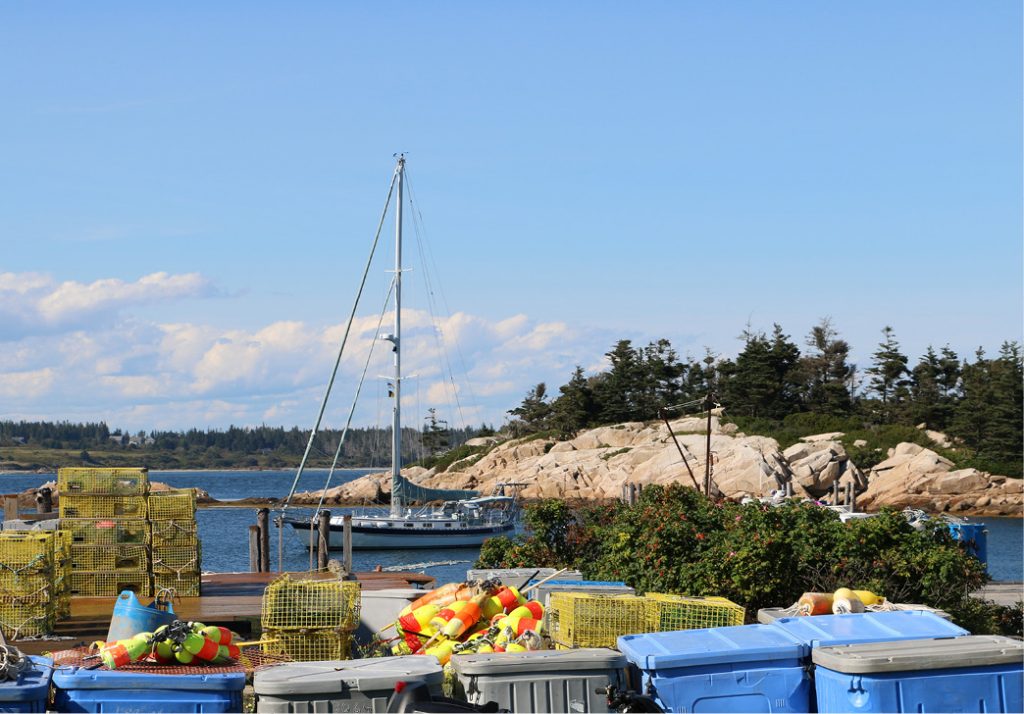
Kite in Criehaven, Maine’s most remote inhabited island. © Zdenka Seiner Griswold
In the spring of 2020, Portland shut down. Restaurants closed, theaters, museums, bars, and barber shops all shuttered. And no one was going anywhere by bus, train, or plane. But we had Kite, our cutter-rigged Valiant 42, and we had the coast of Maine, as good a cruising ground as any we have found in our travels around the world. The coast measures about 228 miles, but the tidal coastline, including all the inlets and bays, stretches almost 3,500 miles and increases to more than 5,000 if you include Maine’s 3,166 islands.
Kite was ready to go. We had worked on her over the winter in preparation for a transatlantic passage to Ireland. That was no longer going to happen. Kite would be our antidote to COVID isolation. We embarked on a long, leisurely summer cruise along the coast, with an emphasis on leisurely, our indispensable Cruising Guide to the Maine Coast by Curtis Rindlaub and Hank and Jan Taft in hand. We wanted to poke around old haunts and parts of Maine we hadn’t visited before, particularly some of the rivers and inlets formed by long, rocky necks left behind by retreating glaciers in the last ice age. Many of these anchorages are quite out of the way and normally we might just sprint by them on our way to the cruising grounds of Penobscot Bay and points further east. You can sail Maine for an entire lifetime and never see it all. This was our chance to explore our own backyard.
Heading up the Sheepscot River, we spent a night on Gale and Charlie Willauer’s (BOS/GMP) mooring in Edgecomb, just outside the Ovens Mouth, where the tidal current rips through a narrow channel. We dinghied into their dock and walked up to the house for a drink. During a ferocious thunderstorm, we learned that their son and his girlfriend were buying Sea Bear, the steel-hulled, self-built cutter belonging to Blue Water Medal winner Peter Passano (BOS/GMP). Pete has sailed Sea Bear all over the world and has done some impressive Southern Ocean voyaging, much of it single-handed. We knew how pleased he must feel that Sea Bear would again be voyaging with this young couple. He and the new owners were outfitting her at a dock in Wiscasset, just a few miles up the river, so we set out to meet them the next morning.
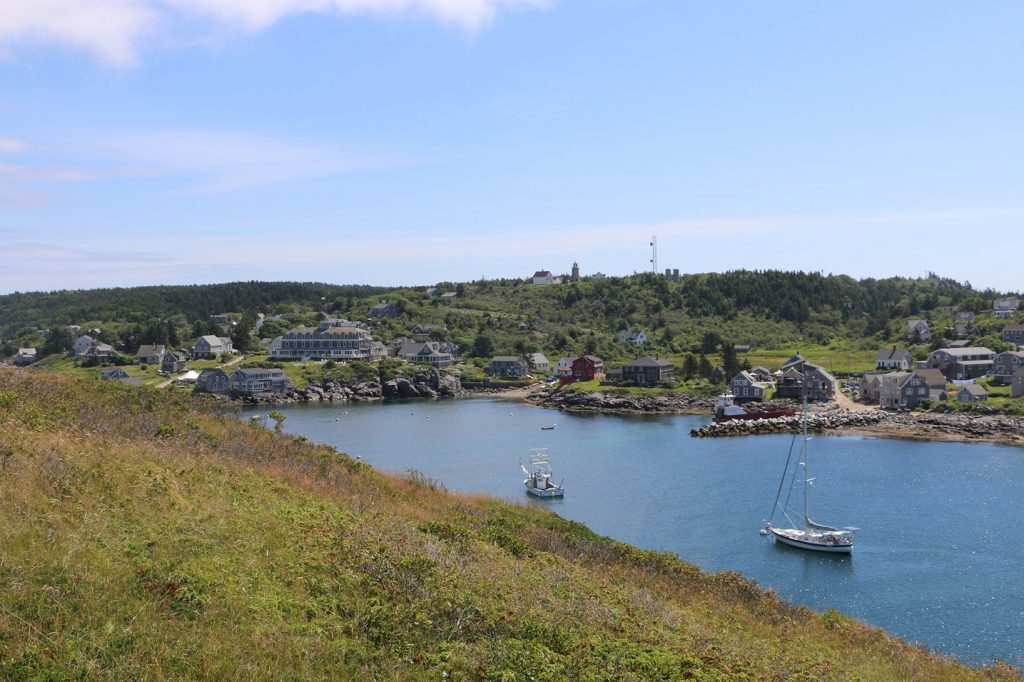
Monhegan harbor © Zdenka Seiner Griswold
Wiscasset was a prosperous seaport in the late 18th century and, as a result, has a lot of pretty Colonial- era architecture. One of its claims to fame nowadays is Red’s Eats, a small takeout shack on a street corner that serves lobster rolls. For some reason that we can’t figure out, Red’s Eats has become quite famous and is a bucket-list item for many tourists coming to Maine. A lobster roll is comprised of a bun (usually a hot dog bun) filled with lobster meat and either mayonnaise or butter. That’s it. There isn’t much difference from one lobster roll to the next, except maybe the amount of lobster. Nonetheless, even during this pandemic summer there was a line outside Red’s; they continued to churn out those rolls at $24 a pop.
At the head of Muscongus Bay, we anchored near the Todd Audubon Sanctuary on Hog Island. One of the special things about the Maine coast are the many undeveloped, preserved wilderness spots open to the public. Organizations such as the Maine Island Trail Association work with landowners to make private islands accessible. Maine Audubon manages several coastal sanctuaries and local preservation trusts maintain numerous trails along the coast. Just about every day, we would anchor in some beautiful place, often by ourselves, take the dinghy ashore, and ramble about.
Muscongus Bay is filled with small islands and rocky ledges. We were carefully picking our way through them at dead low tide on our way to Port Clyde when we passed Friendship, a small fishing village with a busy working harbor. We decided to pick up a mooring for an hour or so while we had lunch, figuring that the owner was off lobstering for the day. Pleasure boats are few in Friendship and, despite its name, it has been known to be downright unfriendly to yachties. As we brought the pendant aboard we saw a large lobster boat steaming directly for us. We braced ourselves for a not unjustified stream of crusty invective. The skipper pulled up next to us and let loose with a stream of…apologies! He was so sorry, he said, but he needed to use the mooring. Normally he’s out fishing, but he had to do some unexpected maintenance on his boat. He usually had another mooring available which we could have picked up, but a friend was using it. We left feeling badly that we had made him feel badly. We promised to come back another time and use his mooring.
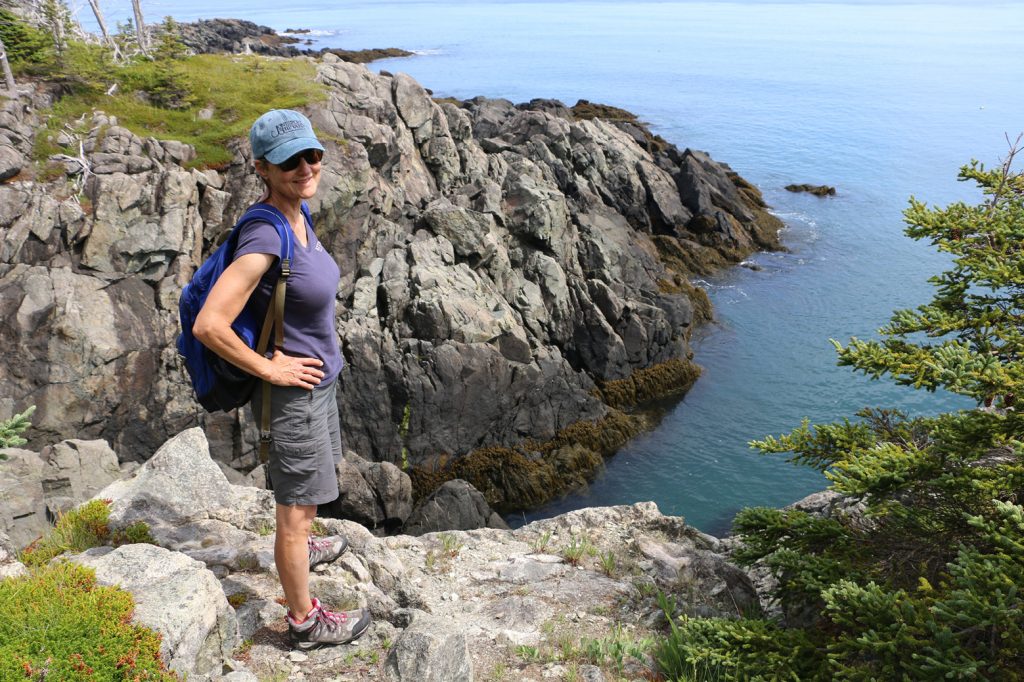
Hiking on Monhegan © Zdenka Seiner Griswold
Tranquil, well-protected Maple Juice Cove in Cushing lies around Pleasant Point from Friendship. We dinghied into a nearby lobster operation with a working dock and fish store and asked if we could leave our dinghy there while we took a walk. No problem. The owner even promised to keep an eye on it for us because the dock was so busy. We’re usually welcome to tie up to these fishing docks, though we always make a point to ask first. A short walk up a country road brought us to the Olson House, the handsome farmhouse that’s the setting for Andrew Wyeth’s famous painting, “Christina’s World.” The house, where Anna Christina Olson lived with her brother, is now owned and operated by the Farnsworth Art Museum in Rockland. Unfortunately, it was closed, one of many reminders of the pandemic we encountered, but cruising itself, socially distant by its nature, did not seem much different. In a world suddenly turned sideways, this was comforting.
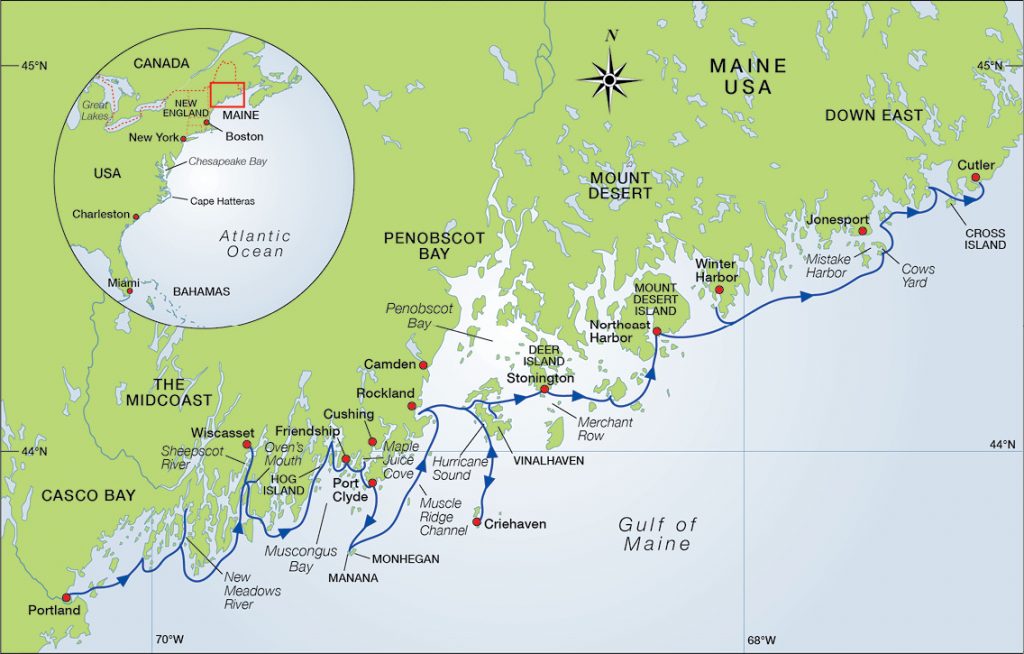
Courtesy of Flying Fish and the Ocean Cruising Club
Escaping the inlets, ledges, and bays of the coast, we headed out to Monhegan, 12 miles off the coast. This craggy island of high granite cliffs and spruce forests has been home to an artists’ colony since the mid-19th century. It still draws artists, but also day trippers and vacationers who come for the solitude and remoteness as well as the beauty. Monhegan Associates, a private land trust, maintains 17 miles of hiking trails. Monhegan feels like a different world. It’s not an easy place to visit by boat, with a small harbor completely exposed to the prevailing southwesterlies, no anchorage, and no way to reserve a mooring in advance. But Monhegan is worth the effort. If the wind is not blowing from the southwest (which it usually is), you pick up a vacant mooring if one is available, then go ashore in search of the harbormaster, who can sometimes be found at the Fish House restaurant. With luck, you will be directed to an overnight mooring. If not, the mainland village of Port Clyde is not far away.
Manana Island is next to Monhegan, on the other side of the harbor. Much of it privately owned, it is the site of an abandoned U.S. Coast Guard station and, in summer, a small herd of curious goats. We dinghied over to explore a bit and stumbled upon a fairly large tortoise in the grass. This was curious. As far as we knew, no tortoises are native to Maine. A Google search turned up the Maine Master Naturalist Program. That seemed to be just the ticket, and we sent them a picture.
Very quickly we got a reply. It was an African spurred tortoise. Native to the Sahara region, they are apparently popular as pets, but can grow to over 200 pounds and live from 70 to 150 years, so they are often abandoned. This was the initial hypothesis for how this tortoise got to where it was, and it set off an excited flurry of activity among the master naturalists as to how to rescue it before the brutal Maine winter set in. Emails flew back and forth as they identified possible places that accept rescue tortoises and determined how they would get it there. Apparently, Delta Cargo has a live animal transport service: who knew?
One of the naturalists made plans to capture the tortoise. We agreed to help if we could. Luckily, before the whole enterprise was set in motion, he got in touch with the island’s homeowners to arrange a landing, and the mystery of the tortoise was solved. He was indeed a pet and had a name: Sammy. Every summer, Sammy is let loose on the island and picked up in the fall. We wondered if perhaps the owners’ great, great grandchildren would still be transporting a 200-pound Sammy to his summer home in the 22nd century. Zdenka took a picture. Perhaps influenced by our recent foray to the Olson house, we thought of it as “Sammy’s World.”
Penobscot Bay has a justified reputation as a premier cruising ground. A little more than halfway up the coast and spoiled with picturesque islands, towns and villages it is the destination of choice for many cruisers coming to Maine; this year that was true in spades. Because of the pandemic, many more people seemed to be out cruising. Some were locals like us who had planned to be elsewhere; others came from neighboring New England states. There was a contingent of COVID escapees from the Caribbean—while Europeans had sailed home across the Atlantic, many cruisers hailing from the Americas headed to Maine.
A happy consequence was that we were able to meet up with many friends, perfecting the art of socially distant sundowners in the process. Cindy Crofts-Wisch and fleet surgeon Jeff Wisch (BOS/BUZ) set an impressive example for us all; happy-hour guests tied to the stern of their Oyster 53, Wischbone, sometimes with an empty dinghy as a COVID buffer.
A less happy consequence of the pandemic was the plethora of mega-yachts, an unusual sight in these parts. Normally these things go from the Bahamas or Caribbean to the Med. This year they couldn’t do that, so many of them came to Maine. Fortunately, they seemed to stick around “social” spots, such as Camden and Northeast Harbor on Mount Desert Island, that have facilities to support them. Only sporadically did they venture out to the more pristine anchorages, such as the islands of Merchant Row, near Stonington.
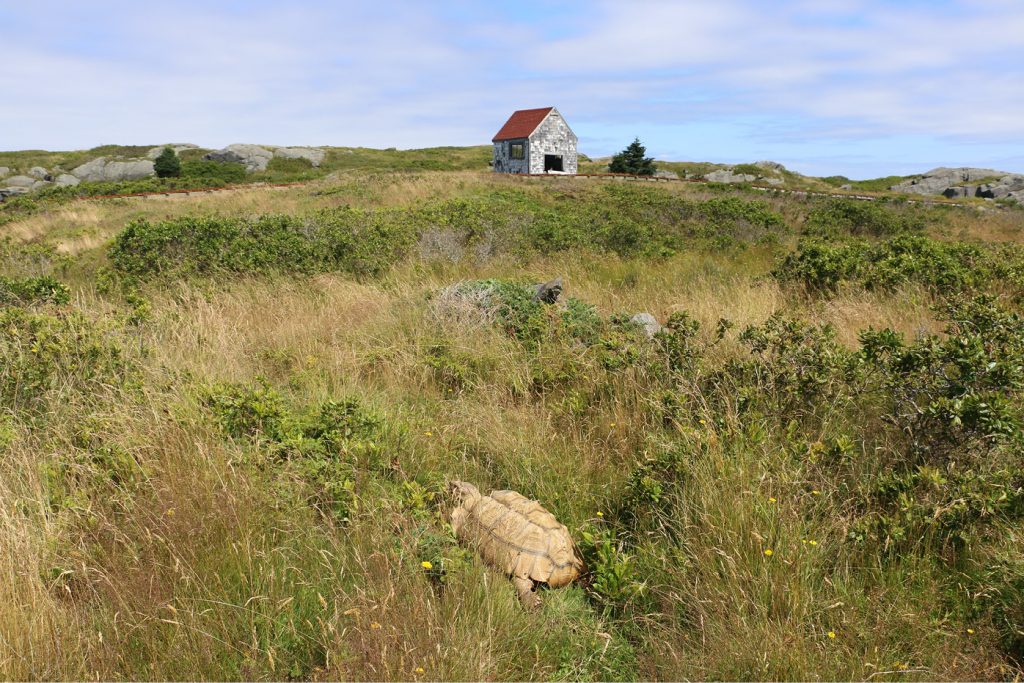
Sammy’s World © Zdenka Seiner Griswold
Down East, the sparsely populated easternmost part of the coast beyond Mount Desert Island, owes its name to the fact that it is reached by sailing downwind in the prevailing southwesterlies. Here, there are only a few fishing villages, and the coast has a wilder, more remote feeling. Rocky and rugged, it can be foggy, and this summer seemed foggier than most. Not that long ago, cruisers would often become fog- bound, unable to move for several days or longer. But with our chart-plotter, radar, and AIS, we are able to navigate easily even when we can hardly see past our bow. We often feel as if we are in some sort of video game.
The bane of our existence, in fact the bane of all sailors in Maine, is the ever-present lobster pot. Lobstering is such a lucrative fishery that pots are ubiquitous. In many places, they look like a multicolored carpet, and you don’t think there can possibly be room to steer through them. You can never really relax, and navigating among the pots in fog raises the anxiety needle pretty high. Nobody relishes the specter of diving into Maine’s frigid waters to free a tangled prop nor of losing the ability to maneuver while being carried toward a ledge.
Even anchorages are affected. When we arrived at lovely Cows Yard, we saw no clear spot to drop the hook. Finally, we anchored in the best place we could find—near a ledge, with about a foot under the keel at low tide. The next morning, we had fouled three pots, which were wrapped around the prop, keel, and rudder. It took a good, painstaking hour to free ourselves. Happily, we were able to untie and retie the floats without cutting any of them.
Soon, we were as far east as we could go. Another year, we would have sailed a quick overnight to Nova Scotia (where lobstering is not allowed in summer) or continued up the coast to New Brunswick and into the Bay of Fundy. But this year, Canada was off limits, with the border firmly closed.
We anchored at Cross Island, an uninhabited National Wildlife Refuge. A lifesaving station, built in 1874 and long abandoned, still stands on Cross. The island has a large network of trails, and it’s easy to get lost—in a good way. You would feel far away from it all were it not for the U.S. Navy’s very-low- frequency antenna station right next door on the mainland. It is huge, with two arrays of 13 antennas each. Each array has a central mast, 997 feet tall, surrounded by an inner circle of 875-foot masts and an outer one of 800-foot masts. The station’s job is to communicate with the Atlantic fleet of “boomers,” nuclear ballistic missile submarines (commanded by a corps of aging captains?). We understand that in the event of a nuclear war, this antenna station might be a primary target. It’s sort of a spooky spot, and you can’t help but wonder if all those powerful radio transmissions aren’t somehow scrambling your insides.
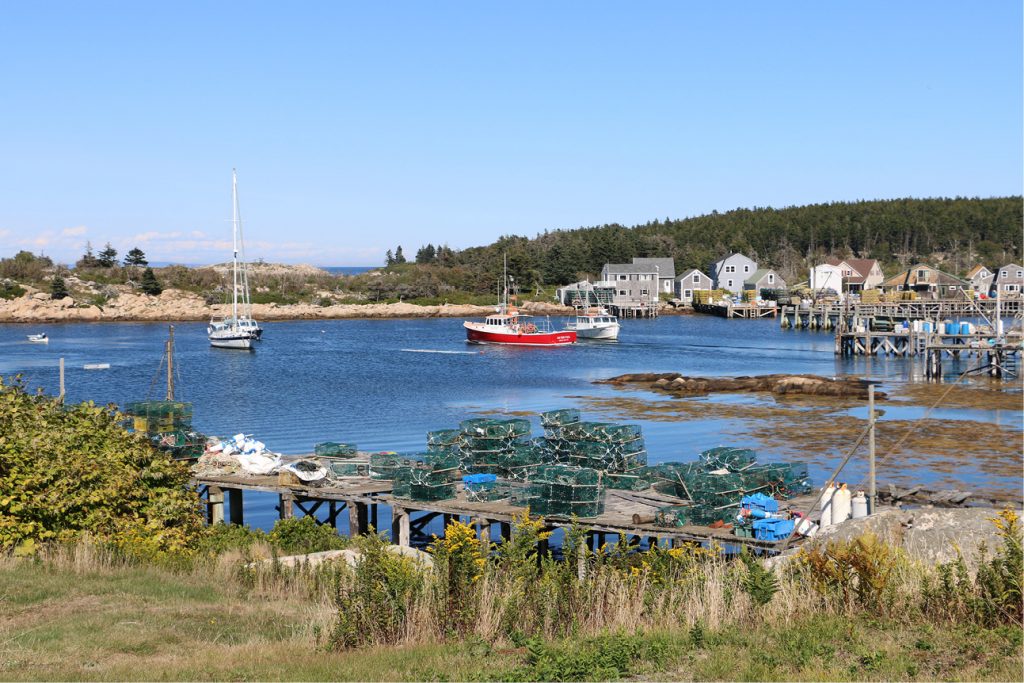
Criehaven harbor © Zdenka Seiner Griswold
The small town of Cutler, the last decent anchorage before Canada, was our easternmost and last stop. Its narrow, attractive harbor is surrounded by houses. A pretty lighthouse sits on an island at the harbor entrance. The harbor is full of fishing boats and moorings, but there is room outside the mooring field. As we were about to drop anchor, we received a call on the VHF: “Sailing vessel in Cutler harbor, this is IceBear. We have a mooring that you’re welcome to use, would you like it?” The boat name was a bit unusual, and Zdenka remembered that one of her best friends from college had recently mentioned a sister who was in the midst of a circumnavigation on a boat called—IceBear? She answered yes, we would love to use the mooring, and by the way, was this Carol? After a stunned pause, the radio voice said yes, but how could you possibly know that?
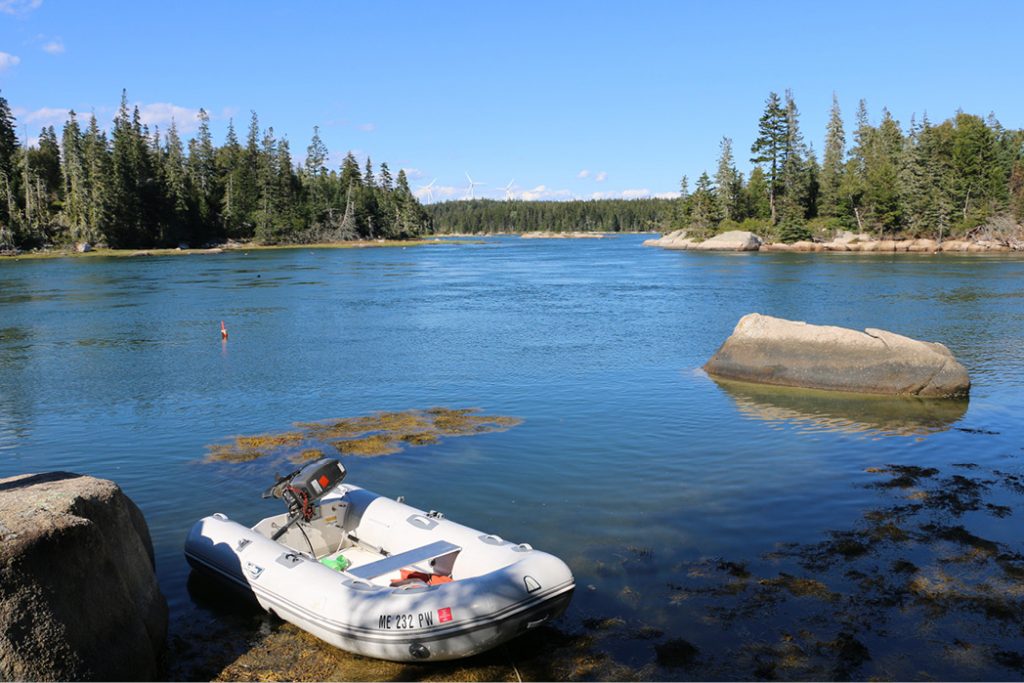
The Basin on Hurricane Sound, Vinalhaven © Zdenka Seiner Griswold
We spent a pleasant afternoon on the porch of this welcoming couple’s house, overlooking the harbor. Carol had a stack of photos from her sister and Zdenka’s university days, memories of a happily misspent youth. IceBear, the handle Carol and her husband use when offering their mooring to visiting boats, was in Cape Town under COVID lockdown. We have often been struck by how small the cruising world is, but even so, this connection surprised us all. We spent over three months on our leisurely Maine cruise. What began as a summer of dashed plans ended up being one of the best seasons we have spent cruising in Maine. As the pandemic outlook hopefully improves in our corner of the world, we plan to spend another summer enjoying this spectacular coastline, catching up with friends, old and new, along the way. ■
With many thanks to the Ocean Cruising Club, in whose journal, Flying Fish, this article first appeared.
Jack and Zdenka Griswold sail Kite, their Valiant 42, out of Portland, ME. In 2016, they completed a seven-year, west-about circumnavigation which took them through the Panama Canal to the Galapagos, French Polynesia, New Zealand, Fiji, Vanuatu, New Caledonia, Australia, Southeast Asia, South Africa, and then home via St. Helena, Ascension, and the Caribbean. Since 2016, they have cruised the U.S. East Coast, Bermuda, and the Canadian maritime provinces of Newfoundland, Nova Scotia and New Brunswick. They spent the past two pandemic summers sailing Maine, their home waters, and were co-editors of the Cruising Club of America’s magazine Voyages from 2017 until 2021.
Editor’s note: This article was previously published in the 2022 edition of Voyages, the Cruising Club of America’s annual publication, and is reprinted with permission. Special thanks to CCA Commodore Chris Otorowski and Voyages Editors Amelia & Robert Green.
The Cruising Club of America comprises more than 1,300 accomplished ocean sailors who willingly share their cruising expertise through books, articles, blogs, and onboard opportunities. Together with the Royal Bermuda Yacht Club, the CCA organizes the legendary Newport Bermuda Race. With active involvement and support from its 14 stations and posts around the United States, Canada and Bermuda, the club focuses significant national and international outreach efforts on ocean safety and seamanship training through hands-on seminars. For more information, visit cruisingclub.org.
